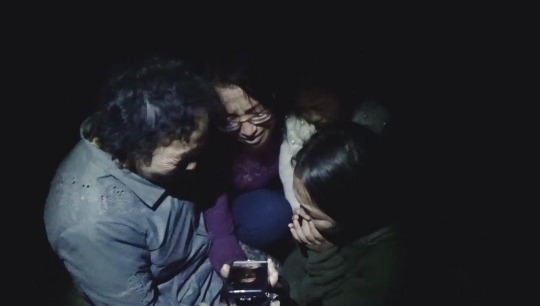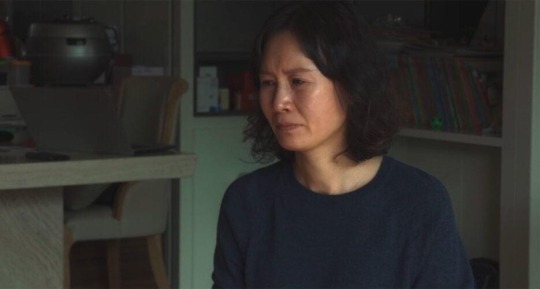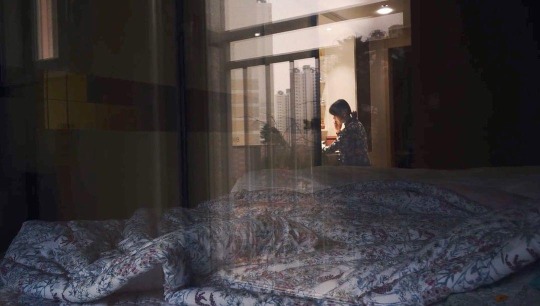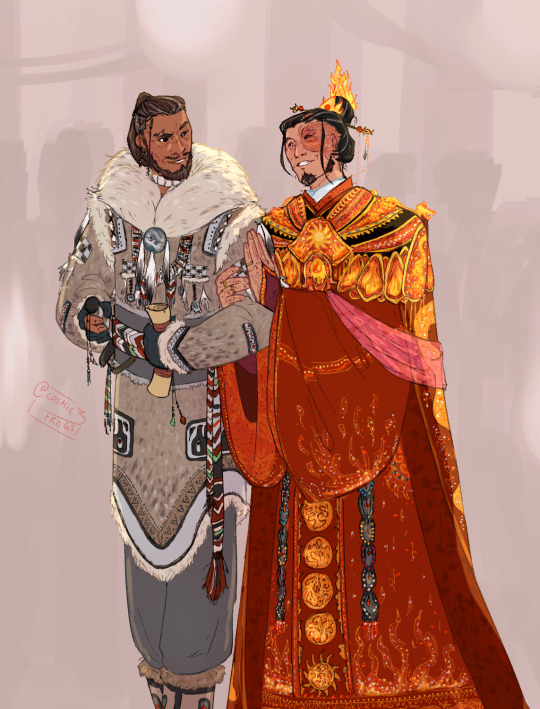#Beyond Vietnam
Text
Martin Luther King Jr. on The Mike Douglas Show, November 2nd, 1967
#politics#mlkjr#vietnam#militarism#black history#the mike douglas show#beyond vietnam#mlk jr#france#algeria#martin luther king jr
62 notes
·
View notes
Text
"Their questions hit home and I knew that I could never again raise my voice against the violence of the oppressed in the ghettos without having first spoken clearly to the greatest purveyor of violence in the world today -- my own government.."
Martin Luther King, Jr's Beyond Vietnam speech 1967
15 notes
·
View notes
Text
youtube
The words of Dr Martin Luther King Jr that we chose to overlook
0 notes
Text









Beyond Utopia (2023)
Dir. Madeleine Gavin
#beyond Utopia#movie#film#documentary#Korea#north korea#South Korea#defector#north Korea defectors#madeleine gavin#asia#china#vietnam#laos#Thailand
5 notes
·
View notes
Text
one caused international tensions through subtle promotion of hegemonic expansionism, the other is oppenheimer

#filipinos are too obsessed with barbie they wouldn't be able to ban it#vietnam is brave for this#they're firm with their foreign policy even if it leads to mockery from the west#because the west is sinophobic until it's time to belittle other asians#barbie#barbie 2023#oppenheimer#oppenheimer 2023#now you may ask how adding an 9 dash line (8 in the film) is a promotion of hegemonic expansion?#PRC violates maritime law through assuming territory beyond what is legal with the historic 9 dash line as their justification#and with the trend of Western films pandering to PRC to profit more?#ridiculous as it sounds barbie is the last straw
13 notes
·
View notes
Text
Song of the Day: December 14
"KMAG YOYO" by Hayes Carll
#song of the day#still sick >:(#I'm not convinced I actually /like/ this song but I can't sing today either way and it caught in my head last time I was in Nick's car#very very good rhythm and quick enough to be a challenge to learn even if I might not ever listen to it again once I've got it down#and I keep thinking I should look into how informal military abbreviations were established and proliferated#I dunno how commonly understood KMAG YOYO is (kiss my ass goodbye; you're on your own) but I'd say probably a majority of#--hmm you know now I'm really doubting my 'majority'. maybe I've got a sampling bias.#I mostly know folks on the poorer and more rural side of things and I've known a lot of law enforcement and military people. hmm--#anyway I was going to say a majority of Americans but maybe that's not generalizable. certainly a majority of Americans I've met though#know what FUBAR and SNAFU mean at least in the colloquial sense#(I've heard disagreements about the particulars of FUBAR. whether it's 'beyond all repair' or 'beyond all recognition' mostly)#and I just wonder how they came to be standardized and spread. my just-spitballing guess is Vietnam vets but I wanna look it up#I suppose if we can manage to get 'okay' so heavily popularized with its weirdass origins then anything could happen#and English is such a fucky language anyway#a little research project for post-fever Alexis! she'll be so happy#edit: first late song post. two weeks in exactly. not too bad!#and only two hours late too! (current-fevered-Alexis fell asleep in the shower)
3 notes
·
View notes
Text
I NEED SOMETHING TO READ
#i've like. read 80% of behind her eyes and now im stuck and don't want to read ahead bc i made the dumb decision of reading#the last chapter and therefore spoiling the plot entirely#if anyone has any recs 🙏 I'll be v grateful#preferably like. nonfiction?#i did start this one book abt the vietnam war but then never read beyond the first chapter
3 notes
·
View notes
Text
The emergence of the SARS virus is similarly the result of an abrupt expansion, in this case in the size of wet markets and the diversity of the strange panoply of animals they sell.
The SARS virus was not new. Nor were the practices that brought bats into proximity with people in southern China. The SARS virus “was probably there in bats for centuries,” says the University of Hong Kong virologist Malik Peiris, whose team first isolated the virus. And the yewei cuisine and wet markets that brought bats together with people in southern China were long-standing, too.
Yewei cuisine is part of a range of traditional cultural practices in China that draw wild animals closer so that people can tap into the animals' power, strength, and longevity. People keep wild animals at pets (or, for the aspirational, dye their domesticated dogs' fur to look like tigers and pandas) and mimic their postures in practices such as kung fu. Traditional medicine practitioners administer their body parts as remedies: tiget whiskers for toothaches, bear bile for liver disease, bat skeletons for kidney stones. For people who consider wild animals precious natural resources – the rarer, wilder, and more exotic the more precious – consuming them is bu, restorative and stimulating for the body, endowing the consumer with a whiff of the animal's natural energy.
But for many years, economic and geographic barriers limited the consumption of yewei cuisine in China, and with it the size of wet markets. China had troubled political relations with neighboring countries such as Thailand and Laos and Vietnam, where many of the most desirable exotic animals roamed, so their supply for consumption was thin and prices high. While the elites could afford to dine on braised bear paw with carp tongue, gorilla lips and pig brain in wine sauce, and leopard placenta steamed with camel hump and garnished with pear, ordinary folk made do with more ordinary fare, or hunted for their own wild game.
Then, in the early 1990s, the Chinese economy started growing by 10 percent or more every year. Suddenly, a new class of young, aspiring, prosperous Chinese in booming cities had more money than they knew what to do with. Along with stocking up on Western luxury goods – Louis Vuitton sold more bags in China than anywhere else in 2011 – they started demanding more yewei cuisine. New restaurants serving peacock, swan geese, and sea cucumber, along with other exotic creatures, sprang up across the region. China reestablished trade with many of its Southeast Asian neighbors, allowing poachers and traders to plunge even deeper into the countryside to meet the rising demand. They crammed their stocks of wild animals into ever larger wet markets, stacking cages of live animals from increasingly disparate locales across Asia next to each other, awaiting sale to yewei-hungry shoppers.
It was only then, after the size and scale of wet markets grew, that a serendipitious sequence of events that could turn a virus of horseshoe bats into a human pathogen became probable.
— Pandemic: Tracking Contagions, from Cholera to Ebola and Beyond (Sonia Shah)
#sonia shah#pandemic: tracking contagions from cholera to ebola and beyond#science#virology#epidemiology#ecology#animals#zoology#economics#commerce#trade#wealth#food and drink#medicine#medical history#china#thailand#laos#vietnam#sars#bats#horseshoe bat#asian palm civet#yewei#alternative medicine
4 notes
·
View notes
Text
{{ Gonna be rewriting Roth's bio to . . . include important and updated details and what not. }}
#OOC.#{{ Such details like! }}#{{ Roth's “dodging” The Vietnam War draft. }}#{{ Roth being expelled from college after The FBI ruined his life. }}#{{ Roth's best friend being murdered by corrupt cops. }}#{{ Roth just not having a good time at all. }}#{{ Roth discovering chaos magic. }}#{{ Becoming enthralled to dark forces beyond the reach of God. }}
0 notes
Text
ok do i understand why a lot of toddler and kid shows give characters parents and family in the military/police; "real kids in real life are in military/police families so we're just trying to be realistic", whatever
but said show runners never seem to think about the implications beyond that, or think about how kids outside of those contexts, who don't have those warm fuzzy (or even neutral) feelings, would see it
#like my niece was a toddler when disney first got their hands on bluey so ive seen a lot of the show#and every so often its mentioned that bluey's maternal granddad was in the australian army. likely in the 1970s & 80s#idr if its every specified how long he was in the army for or where he was; just that it was “in the jungle”#it could've been thailand vietnam western new guinea kashmir or where ever. and they just drop it like a casual funny thing like!#'haha granddad you're so fun show us how to camouflage ourselves with mud like when you had to hide in the jungle :)'#like. i get *why* the showrunners did stuff like this: they grew up where that sort of thing was normal* and just want to portray 'reality'#*meaning they had older family members who were in the military and were stationed overseas#however. they've never honestly *thought* about the context and reasons said family were sent overseas#and that it was terrible they were over there for reaspns beyond that they couldn't see their father in oerson for awhile#or like how steven universe (shut up) had that episode where we meet steven's racist uncle#and the showrunners were like 'its for (white) kids to relate to because we all have a relative who hates illegal immigrants'#without even taking into consideration (or just not caring) that kids of color and immigrant children would see that#im rambling but yknow what i mean?#mickey.txt
0 notes
Text
Vietnam Planters: The Essence of Vietnamese Terracotta
Vietnamese craftsmanship has long been celebrated for its intricate designs and meticulous attention to detail. Vietnam Planters stand out among the myriad art forms that have emerged from this rich cultural heritage, showcasing the nation's deep-rooted connection to the earth and its resources. Paired with the distinct beauty of Vietnamese Terracotta, these planters tell a story of tradition, innovation, and the timeless appeal of handcrafted art.

The Rich History of Vietnam Planters:
Vietnam's agricultural legacy is intrinsically tied to its people's spirit of innovation. The tradition of creating planters is not merely a craft but a testament to the Vietnamese way of life. Each planter, large or small, carries the legacy of generations of farmers and artisans who have shaped the land and molded its resources into functional works of art.
The Allure of Vietnamese Terracotta:
Its distinctive reddish-brown hue and earthy texture hold a special place in clay. Vietnamese terracotta traces its roots back through the annals of time, with a history steeped in tradition and cultural symbolism.. The allure of Vietnamese Terracotta lies in its aesthetic appeal, durability, and versatility.
Craftsmanship Beyond Borders:
The beauty of it extends far beyond the borders of Vietnam. These exquisite pieces have garnered international acclaim, reaching homes, gardens, and galleries worldwide. Their timeless appeal transcends cultural boundaries, resonating with individuals who appreciate the artistry and craftsmanship of creating each piece.

The Sustainable Choice:
The demand for sustainable and eco-friendly products is rising in today's fast-paced world. It is crafted from natural materials and offers a sustainable choice for those looking to enhance their living spaces without compromising environmental responsibility. By opting for planters made from it, consumers support traditional craftsmanship and contribute to the preservation of the environment.
Preserving Tradition, Embracing Innovation:
While the essence of it lies in their deep-rooted tradition, artisans are continually innovating, infusing contemporary designs and techniques into their creations. This harmonious blend of tradition and innovation ensures these timeless pieces remain relevant in today's ever-evolving world.
Conclusion:
In the realm of art and craftsmanship, Vietnam Planters and it stand as shining examples of Vietnam's rich cultural heritage. Their timeless appeal and the sustainable practices employed in their creation make them a coveted choice for discerning individuals. For those looking to experience the beauty and craftsmanship of Vietnamese Terracotta firsthand, lamthanh.vn offers a curated collection that celebrates the essence of Vietnamese artistry.
#Vietnamese craftsmanship has long been celebrated for its intricate designs and meticulous attention to detail. Vietnam Planters stand out a#showcasing the nation's deep-rooted connection to the earth and its resources. Paired with the distinct beauty of Vietnamese Terracotta#these planters tell a story of tradition#innovation#and the timeless appeal of handcrafted art.#The Rich History of Vietnam Planters:#Vietnam's agricultural legacy is intrinsically tied to its people's spirit of innovation. The tradition of creating planters is not merely#large or small#carries the legacy of generations of farmers and artisans who have shaped the land and molded its resources into functional works of art.#The Allure of Vietnamese Terracotta:#Its distinctive reddish-brown hue and earthy texture hold a special place in clay. Vietnamese terracotta traces its roots back through the#with a history steeped in tradition and cultural symbolism.. The allure of Vietnamese Terracotta lies in its aesthetic appeal#durability#and versatility.#Craftsmanship Beyond Borders:#The beauty of it extends far beyond the borders of Vietnam. These exquisite pieces have garnered international acclaim#reaching homes#gardens#and galleries worldwide. Their timeless appeal transcends cultural boundaries#resonating with individuals who appreciate the artistry and craftsmanship of creating each piece.#The Sustainable Choice:#The demand for sustainable and eco-friendly products is rising in today's fast-paced world. It is crafted from natural materials and offers#consumers support traditional craftsmanship and contribute to the preservation of the environment.#Preserving Tradition#Embracing Innovation:#While the essence of it lies in their deep-rooted tradition#artisans are continually innovating#infusing contemporary designs and techniques into their creations. This harmonious blend of tradition and innovation ensures these timeless#Conclusion:#In the realm of art and craftsmanship
1 note
·
View note
Text
Thinking about how the Vietnam War could have potentially ended five years and several million deaths earlier if Kissinger had just gotten therapy as a kid/young adult
#Vietnam War#henry 「let's use nukes to delay trains」 kissinger#man never had a solid belief in his life beyond doing whatever it took to embed himself with presidents#a coward of the highest pedigree
0 notes
Text
youtube
Vietnam vs. Netherlands | 2023 FIFA Women's World Cup | Predictions FIFA 23
#Vietnam#Netherlands#2023#FIFA WWC#FIFA Women's World Cup#FIFA 23#VIE#Nederland#NED#The Oranje Beat#Nothing Like Oranje#VIENED#fútbol#bóng đá#voetbal#Beyond Greatness#Football#Soccer#futbol#futebol#sport#sports#fun#entertainment#youtube#video#Women's Football#women's world cup#ps4#ps5
0 notes
Text

I wanted to go a bit more in-depth with this piece that I did for zukka week 2023 because i got inspired to do more insane clothing details. ID in ALT.
Ramble about the influences/inspirations below:
Design inspirations for Sokka's clothing are mainly Inuvialuit and Yup'ik, with Nenets, Tlingit, and Chukchi inspiration for the tassels, patterns, belt and beadwork. I mixed these with the ornaments canon shows us used by the Northern Water Tribe, and also in Legend of Korra. I got particularly excited about drawing from Inuvialuit sources since the tassels we see in canon look like they could be inspired by this. Going beyond canon's animation-friendly colour scheme, I drew from Nenets patterns/embroidery/sashes and Yup'ik beadwork for accent colours. I think in the future I'd like to find ways to incorporate more Tlingit-style patterns since I rarely see them in fanart (which is a shame - they're stunning), but since they tend to be very big I ultimately decided to only include them as a nod in order to keep the regalia recognisable as 'Water Tribe'. I wonder if I could start using Polynesian influences as well?
Zuko's headdress and particularly the shoulder garment and beaded embroidery draw heavily from women's clothing styles of Lê Dynasty Vietnam. The other main influence is men's royal clothing in Tang Dynasty China, and patterns worn by Mongolian Khatun. Since we have a bit more to go on in canon as to what fire nation regalia looks like, I blended that in as well. I got particularly excited about the embellishments on Lê Dynasty clothes because I could give a little nod to Zuko's dragon-fire by adding more colours to the embroidery. In the future I think I'd want to make the Mongolian influence a bit more obvious... perhaps even push the envelope by incorporating some Bashkir designs, though I'm not sure how well that will go.
#artfromthefrogs#zukka#sokka#zuko#avatar: the last airbender au#avatar: the last airbender#atla#atla fanart#avatar: the last airbender fanart#zukka fanart#zuko fanart#sokka fanart#water tribe#fire nation#older sokka#older zuko#older zukka#dilves zukkae#as i believe they are called#'i want to add more mongolian maybe even bashkir elements' <- man pushing the siberian agenda
19K notes
·
View notes
Text


“Man-Thing!” Fear (Vol. 1/1970), #10.
Writer: Gerry Conway; Artists: Howard Chaykin and Gray Morrow; Letterer: Artie Simek
#Marvel#Marvel comics#Marvel 616#Fear#Man-Thing#Ted Sallis#mmmm I love the smell of Vietnam War-era anti-militarism in the morning#if that just ain’t the most anti-military sentiment we’ve found in a Man-Thing comic yet#I would say it goes beyond being just anti-military industrial complex#as a reader looking for something to nitpick could say that the text all but insinuates that a perfect soldier and an invulnerable monster#vary only by a scant few degrees#very interesting hahaha
0 notes